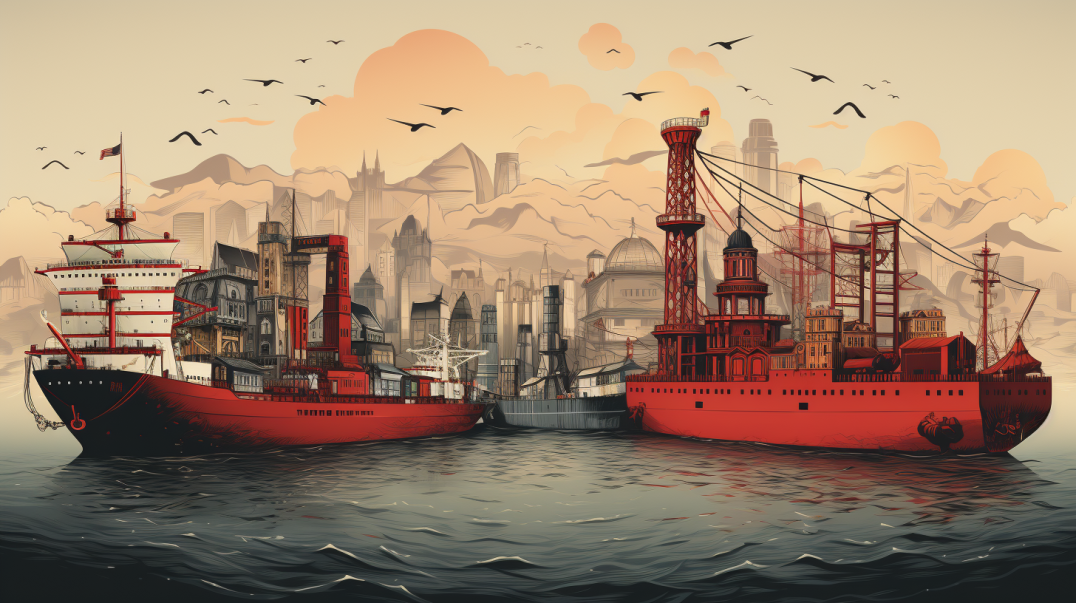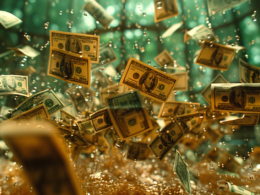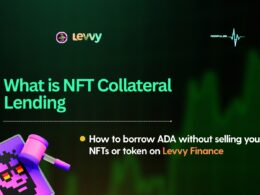Protectionism is usually a bad word around libertarian circles, which advocate for free trade. However, protectionism was a key factor in the success of industrialized nations during the eighteenth century, primarily in Europe. This is due to the fact that for a nation to set up a robust enough infrastructure capable of competing with the world, requires an initial bootstrap phase of government subsidies and protection from outside competitors that could put in jeopardy the initial efforts of industrialization. After this bootstrapping period has passed and the initial sprouts of industrialization have taken root, it’s time to open the borders to free trade since the industrial capacity of the nation can now compete on equal terms with the rest of the world.
In the case of Cardano’s blockchain project inside a new up and coming industry, due to development choices and other social reasons, it has found itself neglected and ignored by the majority of crypto’s news media. Most Cardano users find this situation unjust or unfair, but I want to propose that this can be one of the key points of its success. The main difference in this analogy is that most nation-states that choose protectionism as their economic plan do so by choice. In the case of Cardano, this choice was done mostly by outside forces of the ecosystem.

This image by Twitter user larry0x is a great graphical example of Cardano’s current protectionism stance among the rest of the industry, shown here with the ingenious title of “Independent State of Cardano”. Although, more recently the Wanchain bridge connected Cardano to Tron, Ethereum and Binance Smart Chain to bridge USDT and USDC stablecoins between blockchains. These bridges provide more opportunities and make the blockchains more interoperable between them but they also open up new vectors of attack in case either the token or the chain itself implodes.
The collapse of Terra Luna
In May 2022 when the Terra Luna ecosystem started to unravel and sink into a death spiral, it wasn’t only their ecosystem that got hit, but also every other that was connected to it somehow. Through the Wormhole bridge, Terra was connected to Ethereum and Solana ecosystems. Which not only was the reason for the collapse of Luna to spread across the industry like wildfire but it also was the target of an important hack, only five months before.
The collapse of Terra Luna is a great example of what economic contagion looks like in a new industry like crypto. Economic contagion is nothing new in macroeconomics, from the influx of gold from the Americas to Spain during their colonial exploitation that caused the collapse of the European nation’s economy. More recently, the economic contagion during the Great Financial Recession of 2008 due to subprime mortgages being a globally traded product. Just like global trade and connected financial hubs, bridges in blockchain act as a double edge sword. On the one hand they provide convenience to users who want to move funds effortlessly among ecosystems, but on the other hand they are the least secure piece of technology and they help propagate panic and downturns.
The difference between Terra Luna and other crypto companies that went under at the same time like Voyager, Three Arrow Capital or Celsius was their direct connection to other crypto ecosystems. In January 2022, Do Kwon announced the launch of Luna Foundation Guard, an organization established in Singapore with the alleged mandate of defending the peg of TerraUSD (UST) to the US Dollar. It all started to go south when on May 7th an anonymous trader exchanged 85 million UST for 84.5 million USDC. This transaction started a bank run that was followed by other wealthy traders depositing millions of UST into Curve with the purpose of swapping them for other stablecoins. These trades depleted the pool of USDC and DAI while accumulating a huge amount of UST which led to its depegging. Similar to what happened in the eve of the Great Financial Recession when investment bankers realized they were over-leveraged on low quality mortgage-backed securities and started dumping them on the open market as fast as possible.
Another factor that contributed to the contagion of the crypto market was the Luna Foundation Guard (LFG) supposedly defense of UST by selling their bitcoin reserves. Eighty thousand bitcoin with a valuation of $2.8 billion dollars were sold in the open market on May 8th in a false attempt to provide enough liquidity that would stop the flight-to-safety of Luna Terra investors. Even though the crypto bear market was already in full swing by May 2022, the collapse of Terra Luna was one of the biggest events that deepened the fall of the cryptoverse. Although Cardano has been heavily hit by the crypto winter, even more than Bitcoin and Ethereum, the fact that there were no bridges connecting it with Terra Luna meant that it was isolated from the ripple effects of the collapse.
What can we learn from this event? Bridges not only are risky due to hacks and vulnerabilities but they can also inject risk from other ecosystems into Cardano. For this reason bridges and interoperability with other chains, although positive, should be thoughtfully considered before being established or used. Staying away from ecosystems that focus only on speed or profits over security and decentralization, may not seem smart during the mania phase but when the house of cards starts to fall being wary pays off.
Media blockade
Cardano’s protectionism stance in the industry is not limited to bridges and exposure to other volatile ecosystems, it also manifests itself by the lack of media coverage or should we say positive media coverage. Organic and honest coverage by well known media outlets in crypto are few and far between. This media blockade can be explained by the initial token distribution that Cardano had at launch. 81% of the supply of ADA was sold to the public, 17% went to insiders and the team and 2% went to the foundation. Ergo, Cardano’s cousin blockchain, had a much higher public sale of their tokens at 95.57% and the remaining ERG was allocated to the foundation. Both projects are often ignored by the media while others with much higher insider distribution of tokens are often portrayed in a good light.

This tendency to ignore or slander Cardano started to change a little this year, when Messari found itself strapped for cash once FTX went under and stopped receiving their money for positive coverage. That’s when Input Output Global was able to commission the first quarterly report from Messari published on April 18th.
Another factor for media blockade that Cardano experiences might be related to the substantial differences between Cardano’s infrastructure and the rest of the ecosystem. Bitcoin uses the Unspent Transaction Output (UTXO) model designed by Satoshi Nakamoto, which was the only accounting model for blockchains until Ethereum came into the scene. Vitalik Buterin famously said that he created the account base model for Ethereum because UTXO was too complex to use for smart contracts. So the media was divided between journalists that knew and only covered bitcoin and their forks, and on the other side journalists that only knew about Ethereum Virtual Machine (EVM) to cover all of their sidechains and layer 2. When Cardano appeared in the crypto scene with proof-of-stake, liquid staking and the extended UTXO model, minimal insider representation and a completely different development methodology it was way too far outside the comfort zone of what most journalists knew about. Instead of praising the new approach of “move slow and build” backed by rigorous academic research, the project was mocked and attacked for having research papers and having to delay new features for the sake of safety and code integrity.
Protectionism opportunity
Coming back to the initial analogy of how protectionism helped industrialized Europe during the 18th century, Cardano can have a similar outcome if it is able to seize this opportunity. This period of “protectionism” will not last forever, as the ecosystem continues to grow and build, sooner rather than later the industry as a whole won’t be able to keep ignoring us.
Protectionism policies are like taking antibiotics, it can help in a given circumstance but it’s not meant to be taken for a long period of time. Although the Cardano community won’t be able to decide when this “protectionism” period ends, it’s important that we make the right decisions to take advantage of the circumstances we found ourselves in at the moment. In my previous Adapulse article titled “Why Governance on Cardano Will Fail” I take an honest and critical look at the current state of decentralized democracy on-chain. The coming years will be the most critical for the success of Cardano long term. The CIP-1694 is currently being fast tracked to bring some form of representative governance to the chain. This will be the “make it or break it” moment for Cardano, if the community is able to organize itself and make good administrative decisions with the treasury then it could bring forth a golden era of growth and development steered by the community itself. On the other hand, if the governance ends up being nothing more than a smoke screen for regulators while the decisions are made by a small group of encumbered insiders with nothing more than their own economic success in mind, then Cardano will be another crypto project for the history books.
Just like a country carrying forward a policy of protectionism at the expense of free trade, Cardano must be able to allocate the funds from the treasury in the most efficient way possible in order to maximize the development of an industry that can compete head to head with the rest of the world. Unfortunately, Project Catalyst doesn’t seem to be the most efficient way (at the moment) of distributing funds to teams and individuals able to develop game changing dApps, protocols and solutions. In the latest Fund 10, 63% of the 50 million ADA went to ten teams. This centralization of economic power in a few hands is nothing new in human history and quite inevitable in a proof-of-stake blockchain where 1 ADA=1 Vote. Until a proper solution for decentralized self-sovereign identities is rolled out, which can guarantee 1 person=1 vote, we are stuck with a suboptimal framework for allocating funds.
The argument that whales should have the most decision power because they have the most skin in the game, may sound reasonable at the surface but at closer look it falls apart. An investor that has millions of ADA in their portfolio, most probable only has a small percentage of funds allocated in our ecosystem. Therefore they want to justify their allocation of capital into a highly volatile asset by receiving a higher return on their investment. A higher return on their investment doesn’t necessarily mean they want the best for the ecosystem in the long term, on the contrary they may only be interested in Cardano in the short term to maximize profits and exit before it all goes crashing down.

This image by Jotape shows how the voting power would be divided if Project Catalyst adopted a quadratic voting system. Because the voting power is so concentrated in just a few wallets, the only way to provide a more fair voting process that doesn’t rely fully on plutocracy is to do so by allocating votes to express the degree of preferences. In the current system the 19,639 wallets that have an actual voting power of 47.3 million ADA which is nothing compared to the 1.4 billion ADA that 773 wallets from 1M to 5M have. With quadratic voting the twenty thousand small wallets would have a closer voting power to the 773 whales.
Conclusion
Cardano’s development philosophy of taking its time to build things meticulously and rigorously from the beginning has contributed to being excluded from the crypto mainstream media and coverage. The “Independent State of Cardano” was built in part by its ethos of “move slow and build”, the technical choices of its infrastructure and protocol that separates it from the rest of EVM chains and the lack of VC money involved in its origin. These may seem as negative points against Cardano but it also means that we can focus on building our own ecosystem without worrying (too much) about what’s happening in the rest of the industry. This period of “protectionism” can be a blessing if we can organize ourselves to administer the available community funds in the most efficient way possible to fund the most amount of projects that have a real chance of succeeding. As the industry continues to grow and Cardano to mature, this period of “protectionism” will eventually fade, and when it does we have to make sure that Cardano has the best possible shot at competing head to head with the rest of the industry.











Ser, this is a Wendy’s